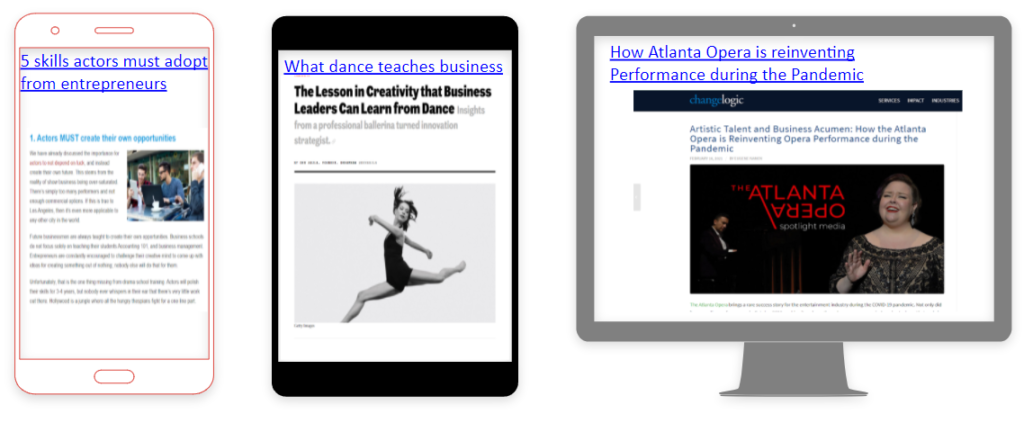
Module 3
"Keeping Motivation and Focus"
"Keeping Motivation and Focus"
Aim
The purpose of this module is to provide performing artists with techniques to put effort and focus into following their professional passion and create value for themselves and others even when dealing with setbacks.
By the end of this module, you should be able to...
Knowledge
- list common professional adverse circumstances and ways to overcome them.
- recognise different ways of motivation to create value.
Skills
- reflect on the social benefits associated with having initiative and creating value for self and others.
- use strategies to persevere before adversities when trying to achieve goals.
Attitudes
- create motivation in a team by celebrating successes and encouraging innovative ways to tackle challenges.
Key-concepts
Challenge
A challenge is a situation or task that enables individuals to make them test their competences, effort and determination to overcome them.
Challenges must be seen as opportunities to reinvent, innovate and design strategies.
Motivation
Motivation is the reason/s for doing something in a particular way, causing someone to act. It is a process that activates goal-oriented behaviour.
There are extrinsic motivations that arise from outside of the individual and involve rewards such as prizes or social recognition, and intrinsic motivation to lead to personal gratification.
Perseverance
In opposition to giving-up, perseverance is the quality of being persistent in doing something despite difficulty or delay in achieving success.
To keep perseverance, it is important to have a plan and stick for it.
Value Creation
Value creation is the primary aim of any business. It involves a promise of value to be delivered. Something that is valuable to others in exchange for something that is valuable to you.
It is what sets a performing artist apart from the competition and brings a unique meaning to your brand.
Some common challenges for performing artists are…
- Uncertainty
- Lack of motivation
- Lack of goals
- Lack of entrepreneurial skills – problem solving, decision making, critical thinking, innovative thinking, finances, etc.
- Dealing with change
- Attracting new spectators and keep the old ones
- Maintaining profitable programmes
- Keeping an artistic organisation running
How performing artists can overcome challenges
Design strategies
Take time to think logically: describe the obstacles you face and plan how you can overcome them. Set medium or long-term goals focused on how things can be improved and break them into small steps you need to take to progress towards them.
Communicate your value
Try to hit the emotional core of your audience communicating to them how you or other performing artists have impacted and positively changed the life of other people either in your community or globally . This will also improve your confidence.
Tell stories
Stories must be the baseline of the interaction with your audience. They help make sense of the world surrounding us, direct people to what we want them to pay attention to and create emotions.
Grow your community
Performers, performances and venues are crucial to have long-term success and stability. E.g., think about the possibility to have discussions between artists and the audience after the shows or turn your venue in a gathering space, providing local food and beverages in a cool bar. In a technology-oriented world we need to connect with people and make them get-together.
Offer experiences
Make people feel welcome and their experience warm. You need to create experiences to engage people not as mere audience members but as part of your shows. This will encourage them to spread the word positively. Remember you have an audience, but they are a group of individuals also and one size does not fit all always. Work on different experiences’ possibilities considering the characteristics of your audiences.
Be proactive in self-marketing
You need to build a relationship with your audience. Think about ways to expose yourself to people on a regular basis. Social media is relevant to continuously reach and engage audiences. Remember that making yourself known to the public and achieving your goals takes time and effort.
Get better at sales
Prices in performing arts are always controversial. Charge a price that is fair for your show and find ways to encourage bulk buys and memberships.
Perseverance on performing arts during COVID-19 pandemic
Play it Safe is an online platform for the broadcast of live concerts, created amid the Covid-19 pandemic in Portugal by the music community Gig Club and the publisher Omnichord Records. Its aim is to encourage music fans to stay at home, reducing the chances of the virus infecting the population.
Artists broadcast intimate concerts from their homes through Gig Club’s online radio or in video on social media. The platform strongly recommends to donate money to the artists for their performances or to buy their music. Another option is to buy tickets in advance for shows taking place when the pandemic restrictions allow it, receiving the musicians the value during the pandemic – when they most need it.
Perseverance on performing arts during COVID-19 pandemic
- Which other strategies are you aware of that performing artists implemented to keep their perseverance during COVID-19?
- What about you? How did you keep your perseverance in the performing arts during COVID-19 pandemic?
- And how did you persevere in your artistic career during these times?
- Research on the internet some national and international examples of best practices that performing artists are implementing to persevere their career. Present your findings to your colleagues.
Benefits of creating value through arts for yourself and others
Improved health
After being exposed to art, people present decreased levels of stress, due to less concentrations of cortisol, the stress hormone.
When creating artworks, artists feel more relaxed and experience positive emotions.
Cognitive development
Watching artists preform improves critical thinking skills, while people try to decode the elements that compose the artwork.
Developing artworks, artists establish new connections between brain cells, leading to a higher psychological growth. Using their imagination to communicate their messages leads them to better problem-solving skills.
Extended empathy
After a show, people display higher social tolerance and empathy. They are exposed to diverse points of view which helps them to have compassion for others.
Economic growth
Arts contribute to local and regional economy by generating jobs, developing talent and skills, attracting visitors and encourage spending. Making venues attractive helps to retain businesses while encouraging employment.
Creation of social bonds
Art facilitates social interaction between their creators and their audiences. This interaction favors community cohesion and reduced social exclusion and isolation.
Pleasure
Viewing or creating art helps to release dopamine, the chemical related to love and pleasure. While creating art, the levels of confidence are also increased.
Further Reading
Innovative ways to tackle challenges in performing arts

Keeping motivation and focus
Action Plan
Identify your challenges
Write down the challenges you and your co-workers go through while pursuing your career in the performing arts.
Find ways to create value
Using the competences, you acquired during the module and also your creativity, describe some possible ways to tackle the challenges you identified in step 1 that can bring value for you and for your audiences.
Set goals
Considering the results of steps 1 and 2, set goals that are SMART: specific, measurable, attainable, relevant and time-bound.
List the steps to follow to reach each goal, prioritise the tasks, and create a schedule for them.


